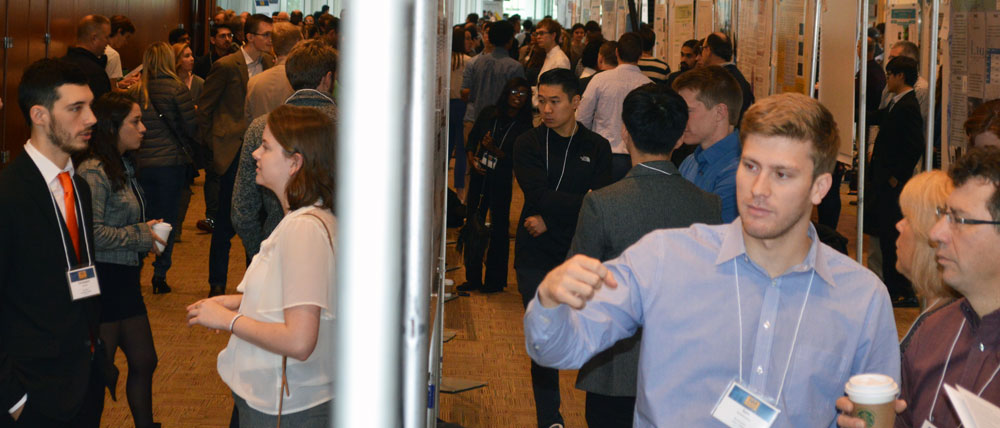Leanna Rose, Lucas Sherman and Marlie Fowler recently shared a unique honor: They were the sole high school students invited to present real-world research at a college symposium.
Lucas called it “one of the most amazing experiences of my high school career.”
The trio of seniors in science teacher Heather DeJonge’s biology research class were at the Van Andel Research Institute recently along with nearly 200 undergraduate presenters, plus scientists, university faculty, graduate program recruiters and researchers.
Leanna, Lucas and Marlie spoke to attendees of the West Michigan Research Undergraduate Symposium as they filed past a 40-by-60-inch poster the trio created about their VARI- and Michigan State University-affiliated research.
“We’re basically using garlic to see if we can improve the lives of people with Parkinson’s (and Alzheimer’s disease),” explained Lucas, who has been in the class since he was a freshman.
The Lowell students’ work has centered on neurodegenerative disease using c. elegans, tiny worms that are barely visible to the naked eye. The worm is used as a model for some changes that happen in human neurons in diseases.
Other students who worked on the research project — Dawn Kondor, Brianna Roest, Irving Vega and Cassandra Wygant — have graduated.
“Now they think they have enough results of their experiments to tell other people about them,” said Dr. Steve Triezenberg, dean of the institute’s graduate school. “They get to say, here’s the questions we were asking, here’s how we did our experiments, here are the results, and here’s what we think about the results.”

‘What I Have Strived For’
The institute’s Cook-Hauenstein Hall on Nov. 10 was a cacophony of curiosity: noisy and crowded as researchers gestured toward their posters to explain their work.
The high school trio who stood beside poster No. 150 did their part to elaborate for those who stopped to chat as their teacher took photos.
“This is what I have strived for, for them to have this opportunity,” DeJonge said, beaming. “It’s one thing to do the research; it’s another thing altogether for them to be able to share it with the scientific community.”
Said Marlie: “Saturday’s experience was so unique as a high school student. My eyes were opened to how many opportunities there are for me that I don’t know exist yet, both with research and for the future in general.
(The conference) was the first time I’ve been asked scientific questions well above a high school level with the expectation that I could answer them confidently. While intimidating, it gave me confidence that I know more than I think.”
Unique Partnership
Lowell High School’s research class got its start in 2015-16 as an after-school club. An official class was created through the partnership the school has with the Van Andel Institute’s Van Raamsdonk Laboratory. The institute’s Employee Impact Campaign fund provided some $22,000 in equipment the students use, DeJonge said.
“It was really neat to see their endorsement of the science being done by high school students,” Triezenberg said.
Marlie doesn’t think a laboratory setting is in her future, but she’s definitely interested in pursuing biology. Lucas said he loves the research, and is especially drawn to scientific writing. And Leanna really wants to go into medicine. She pictures herself as a university professor, taking on undergrad researchers.
“Oh good,” chimed in DeJonge. “Then I’d have a future scientist to work with.”
Marlie said she’s grateful for DeJonge’s passion for making the opportunity happen.
“I think everyone deserves a teacher who works that hard for her students,” she said.
CONNECT
SNN article: Trying to find the roundworm fountain of youth
SNN article: Student scientists do real-world research
Van Andel Education Institute programs for students










